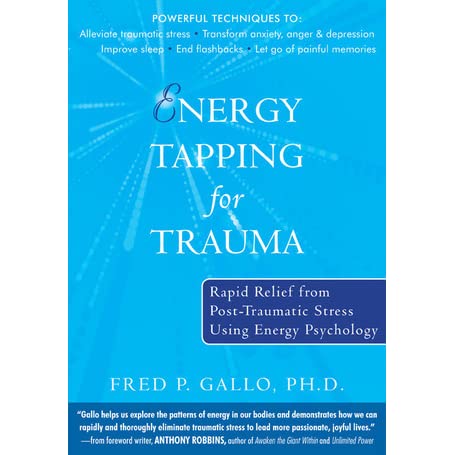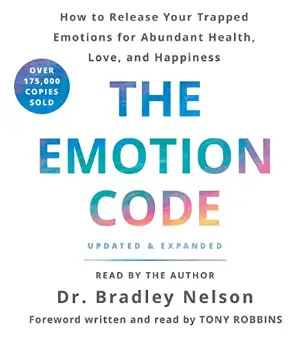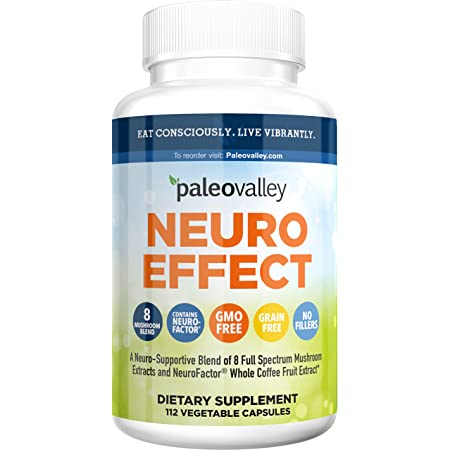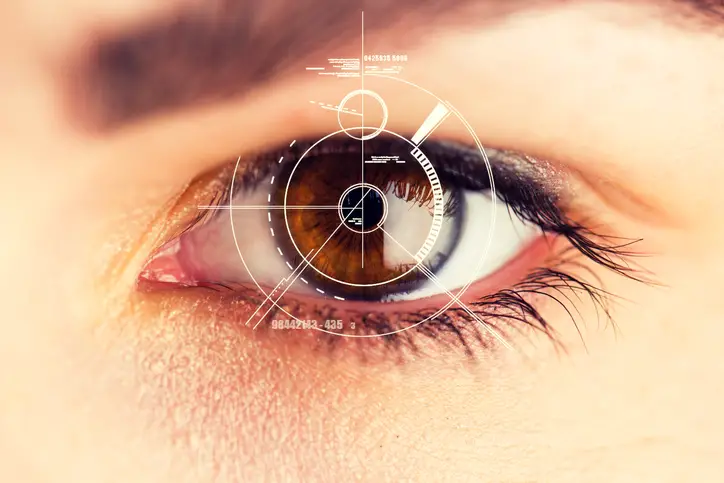
Dr. Andrew Huberman is a Stanford University trained neuroscientist whose popular podcast has reached tens of millions of people in recent years.
His life’s work has been centered around helping people to learn simple tips and tricks on how to program their brain to work better over the course of their daily lives.
Recently, Huberman spoke about an exercise that is incredibly simple to do, but can be incredibly helpful, especially for people who have suffered physical traumas in their lives (which is pretty much everyone).
The exercise is done by utilizing your eye muscles in an entirely different way than they are usually used, and it helps to unlock a different part of the brain that can help a person heal from physical and emotional traumas.
Lateral Eye Movement for Healing Trauma
The exercise helps train the brain to recall traumatic events in a way that is safe and fosters healing.
To do it, simply move your eyes laterally, from side-to-side.
Do this while thinking of something you are afraid of, such as a traumatic event of the mental, emotional or physical variety that happened in your recent or even distant past.
Ideally, you should do this for reps of at least 20 times, in sets of 3, almost like lifting weights.
By moving your eyes laterally, you will activate the part of the brain where physical and other traumas are stored. This can help your brain to better process what happened, without having to dive too deep into the subconscious mind, as Huberman explains in the video below on his YouTube channel.
This Process is Known as EMDR Therapy

Created by Dr. Francine Shapiro, EMDR, or eye movement desensitization and reprocessing, is now recommended as an effective treatment for trauma in Practice Guidelines of the American Psychiatric Association, as well as in the Departments of Defense and Veterans Affairs.
Dr. Shapiro lived from 1948 to 2019, but not before sharing her impressive contributions with the world. She has received several awards for her discovery including the International Sigmund Freud Award for distinguished contribution to psychotherapy, which was presented in Vienna, Austria, as well as an award for Outstanding Contributions ot practice in Trauma Psychology by the American Psychological Association Trauma Division.
A simple demonstration of how her technique works is shown below. There are many more advanced, clinically approved ways to practice EMDR therapy, but it can also be done at home with little to no equipment:
A video of Dr. Huberman explaining the benefits of EMDR and lateral eye movement is also shown below. It details some of Dr. Shapiro’s clinical research and how she managed to prove the doubters wrong over the years:
My Personal Experience Healing Physical Traumas
Over many years of my life I have experienced countless physical traumas, or near physical traumas, as well as emotional and mental traumas regarding people saying negative things about me, being talked down to, or feeling or being left out.
From physical attacks to bad car accidents to attacks to car accidents that were nearly even worse, I have been through a lot.
In the past 10-15 years since I discovered how to heal myself holistically, and have worked with independent holistic healers, I have noticed incredible changes in how calm I have become.
This doesn’t mean that the damage doesn’t still replay, and reside, in my subconscious mind, but it does mean that I am able to regulate my feelings, thoughts and emotions far better than I did when I was younger.
Some of the therapies that have helped me include:
Energy tapping- This technique involves “tapping” on meridian points of the body to open up the flow of energy. When our brains are overly sensitive because of past traumatic events or the fear of traumatic events happening to us, we tend to shut down. Our breathing shuts down. We are more alert. Certain words or thoughts or ideas may trigger the fearful parts of our brain, or cause us to lose focus and feel outside of ourselves.
Energy tapping can heal these feelings quickly, and involves a mixture of talk therapy and gentle tapping motions to activate the body. Learn more about energy tapping here, or in the book ‘Energy Tapping for Trauma’ by Fred Gallo and Anthony Robbins shown below.
Lateral Eye Movement- By thinking of a physical trauma you’ve suffered and practicing lateral eye movement immediately after, your brain can begin to orient itself with a feeling of comfort and safety in relation to the trauma suffered. Watch a full explanation in the video from Dr. Huberman above if you haven’t already.
This worked incredibly well for me while thinking about traumatic events I suffered recently (I felt a physical release of the tension associated with them in my brain).
Emotional Release Work- Emotional release work involves delving deep into your psyche to recall difficult events in your past. These events may include being attacked by someone on a playground or in your home, a car accident, a physical fight, a fall, or even a time during which you were attacked verbally and made fun of by someone else.
The process works to heal these emotions in your subconscious mind. Using a biofeedback machine, a holistic doctor or health professional can measure your responses to different questions he or she may ask you, providing a roadmap to the traumatic event that you suffered so it can be discussed openly and honestly.
After two or three years of emotional release work, my life and career really began to take off. I consider this to be one of the most healing techniques available to human beings. The process is not always easy, as a lot of anger, frustration and tears are often released, but it is incredibly effective.
When combined with herbs, supplements, and lymphatic massage techniques, emotional release work can undo years of physical and emotional traumas, right at the source. It made me into an entirely new person, who felt lighter and more confident, but still like his original self.
Learn more in the book ‘The Emotion Code’ by Dr. Bradley Nelson.
Supplements and Foods for Brain Health
Aside from the above techniques, eating the right foods and taking supplements can help improve brain function helping a person to choose positive and constructive thoughts more often than negative ones.
Magnesium, for starters, can help by relaxing the body, mind and spirit so that more effective and precise inner (and outer) work can be done, either by yourself or a health professional.
Magnesium is essential for a healthy stress response, so if you’re feeling stressed, supplementing with magnesium either orally or topically can help to establish a physical starting point to attack whatever problems you may be dealing with deep down inside.
Medicinal mushrooms contain neurotropic properties that boost brain function by healing and repairing nerve endings and synapses, allowing for more effective communication between brain cells. Magic mushrooms aren’t the only healing varieties, others like Lion’s Mane, Turkey Tail, Shiitake, Maitake, Chaga and Reishi can transform a brain for the better from the inside-out. Improved focus, recall, and awareness are just a few positive side effects of these mushrooms.
I take this organic mushroom blend from Paleo Valley called Neuroeffect every day
Click here to try it, or click on the picture below to learn more
Omega 3 fatty acids like those found in wild-caught fish oil may also help to improve communication between brain cells, while improving symptoms of brain fog including difficulties with attention and memory.
***
These are just a few of the ways to improve brain function along with the exercises mentioned above.
As always, the key ingredient needed to heal from physical, emotional and mental traumas is time.
I personally began to heal after quitting my 9-5 job to focus more on my passion in writing. This process improved my focus, concentration, happiness and excitement each day, but it also brought me to the doorstep of insecure, sensitive and difficult feelings associated with traumatic events I had suffered throughout my lifetime.
By researching and engaging in therapies like these in both personal and clinical settings, eating healthier, going for walks, and taking brain-boosting supplements, I finally healed these traumas in ways I never thought possible.
The responses I felt from in my body and brain were unlike anything I ever expected, bordering on euphoria at times. I began to see the world, including myself, my body, my thoughts, and my day-to-day life, from an entirely new perspective that allowed me to advance in ways I never thought possible.
In conclusion, my final thoughts on healing traumas is that healing is a lifelong process of learning, unlearning, practicing, experimenting, and staying persistent, as traumas tend to repeat themselves in different forms throughout our lifetimes.
The good news is that the payoff for healing them is something that is worth the effort, and the wait, every single time in my personal experience.
Thanks so much for reading, and best of luck in your personal healing journey as always.
Sincerely,
Nicholas J. Meyer
AltHealthWorks.com Founder
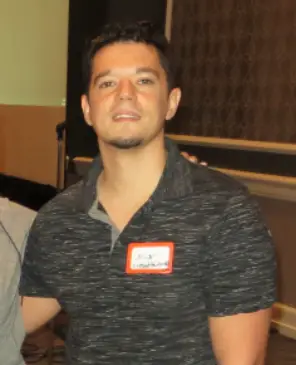
Related Reading:
Infrared Red Light Therapy vs. Near Infrared Light Therapy: What’s the Difference and Does It
From Oncology to Spirituality: New York Doctor Used Sound Therapy to Heal Cancer Patients
Little Known High Tech Treatment Could Be Answer to Fibromyalgia Mystery
Thanks for installing the Bottom of every post plugin by Corey Salzano. Contact me if you need custom WordPress plugins or website design.


